Staying in the soup and stew world – it is midwinter after all here – I thought it time to return to The L Word project with another version of the ubiquitous South American stew, locro. For those of you who are new to all this, and just as reminder, here’s a little blurb on the history of it from the main page of this venture.
Locro is a stew, a classic, staple dish that, while often associated with Argentina, is far more widespread. Versions of locro can be found throughout South America, particularly anywhere that there’s an influence from the cultures that spoke (or speak) the Quechua language. In fact, locro is a name derived from the Quechua “ruqru” or “luqru”, which originally was a traditional stew centered around the papa chola, a particular type of potato with bright yellow flesh and a pinkish skin, but over time has come to refer to a wide variety of stews based on potato or corn or wheat or beans.
There are dozens and dozens of recipes from virtually all of the South American countries for different types of locro. I doubt I’ll ever get to try all of them, nor even make all of them (I have almost three dozen recipes to make at some point or another), but here are my adventures in the kitchen doing the latter. Before anyone writes me to tell me how my recipe doesn’t match your grandmother’s, let me just point out that your grandmother’s recipe doesn’t match your best friend’s grandmother’s recipe either. I’ve spent the time researching, and generally take anywhere from half a dozen to a dozen different versions of the same recipe and try to both distill them down to their essentials, but also use the bits from each that intrigue me.
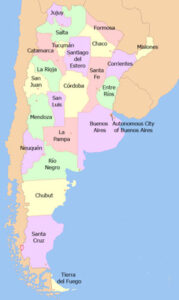
Today, we’re headed to the northeast of the country, where Corrientes province (in pink) is bordered to the east primarily by Brazil, with a short frontier with Uruguay, and to the north by Paraguay, and Misiones province. In particular, this version is called Locro de mandioca, with mandioca or yuca root, filling in for the squash used in many other versions. I’ve written in detail before about both the root and how to prepare it, here.
This version also uses maíz colorado, or “colored maize/corn” versus the more commonly seen maíz blanco, or “white maize/corn” in the Argentine national version, locro criollo (which basically just means the version that the folk around Buenos Aires have decided is the “real” one).
Rinse and then soak the corn overnight in water.
We have our soaked corn; some zapallitos redondos or zapallitos troncos, depending on who you ask – a globe zucchini; some yuca root; some mildly spicy cured chorizo, cross-cut beef ribs, and some beef cut from the upper shank (the ribs are pretty much a standard, the other cut – anything that needs some long cooking); green onions, and parsley. Not pictured – salt, pepper, and about a tablespoon of dried oregano.
Bring the corn to a boil in what looks like enough water to cover everything once it’s in there. You can always add more water – it’s harder to remove excess without losing flavor. Boil for about 15 minutes.
Prepare the yuca root – this is probably the most time consuming step. I’ve gone through the process in detail here, the only difference being here I cut it in roughly 1″ cubes. Slice the chorizo, trim and cut the ribs into sections, trim and cut the other beef into cubes.
Add the yuca root to the pot, bring it back to a boil for about another 15 minutes.
Add the meats, the oregano, and some salt and pepper. Bring back to a boil, turn the heat down to minimum, cover, and simmer for 90 minutes.
Cut the zapallitos in small cubes, chop the green onions and parsley.
After 90 minutes your locro should look more or less like this.
Add the green stuff. Resist the urge to add more water. The zapallitos are going to give off a fair amount and you want this to be a nice thick stew. Bring back to a boil, reduce the heat to minimum again, cover, and cook 30 minutes. If it seems like you have too much water, leave the cover off and more of it will evaporate.
This should be the final result. Taste – add salt and pepper if needed.
Now, on the side, during that 90 minutes of simmering, we’re going to make a typical “hot sauce” from the Corrientes region. They’re big on green onions up there. Here we have a couple of green onions chopped, a couple of teaspoons of chili flakes, one of hot paprika, 120 ml (1/2 cup) of neutral vegetable oil, and 60 ml (1/4 cup) of cold water.
Over low to medium heat, fry the green onions, and the two spices in the oil for a few minutes. You want to just get it to the point where the green onions would start to brown if you kept going.
Remove from heat and add the cold water to stop the cooking. Mix it together well and let it sit.
And you have this delicious moderately hot sauce to drizzle over the locro, as in the photo at the top of the post.
Serve it up and let people add the hot sauce to their own preferences.
Overall, this is one of the simpler locros we’ve made in this series. We liked it a lot. The yuca root gives a different texture than squash or potatoes, and the stew is just plain delicious. Our next door neighbor is from Corrientes and while the yuca sub for the potatoes was “different from how my mom would make it”, everything else was apparently dead on for a bit of nostalgia for him.
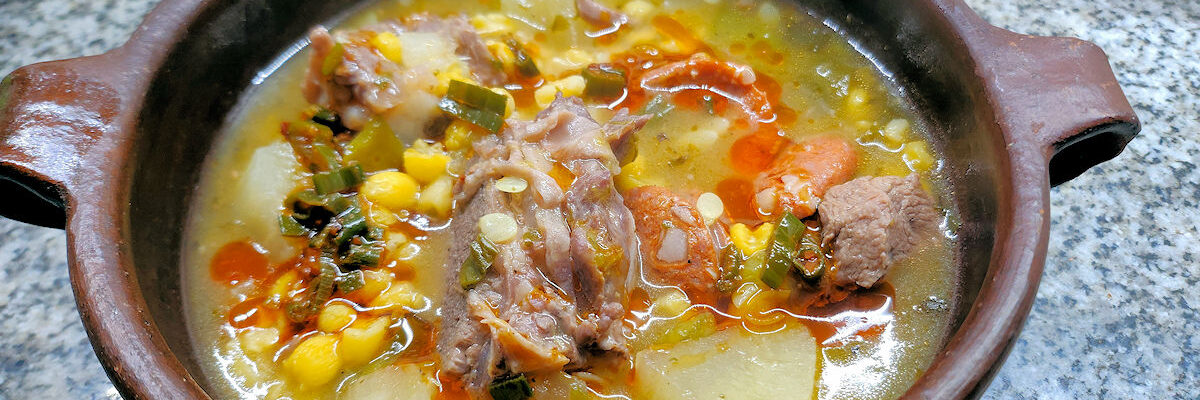
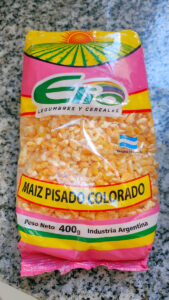
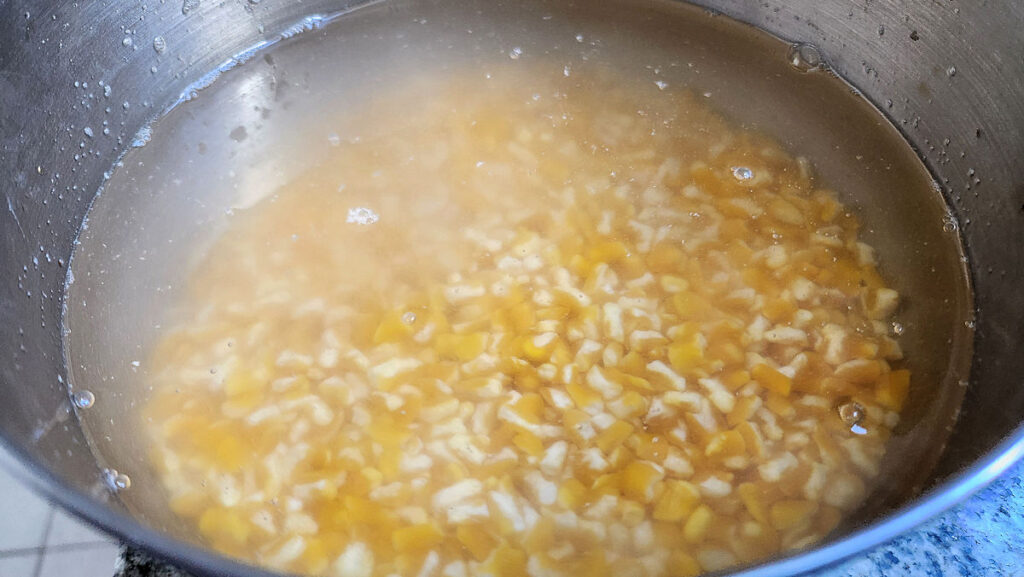
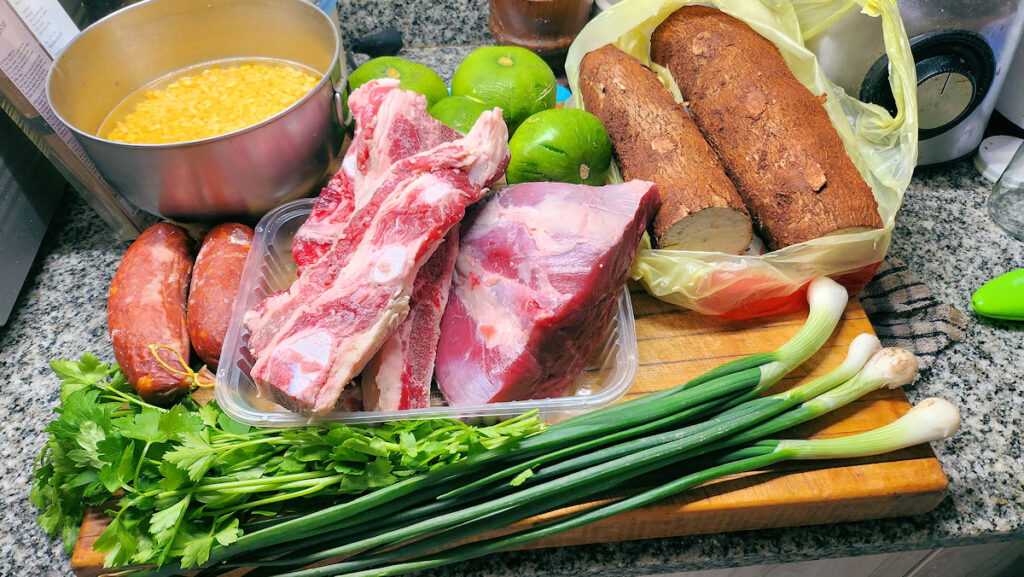
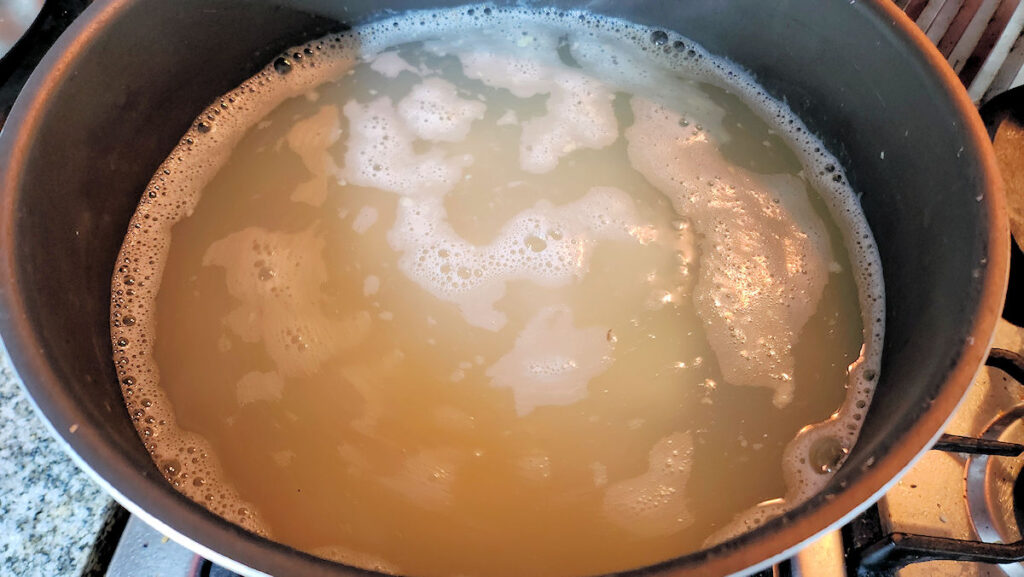
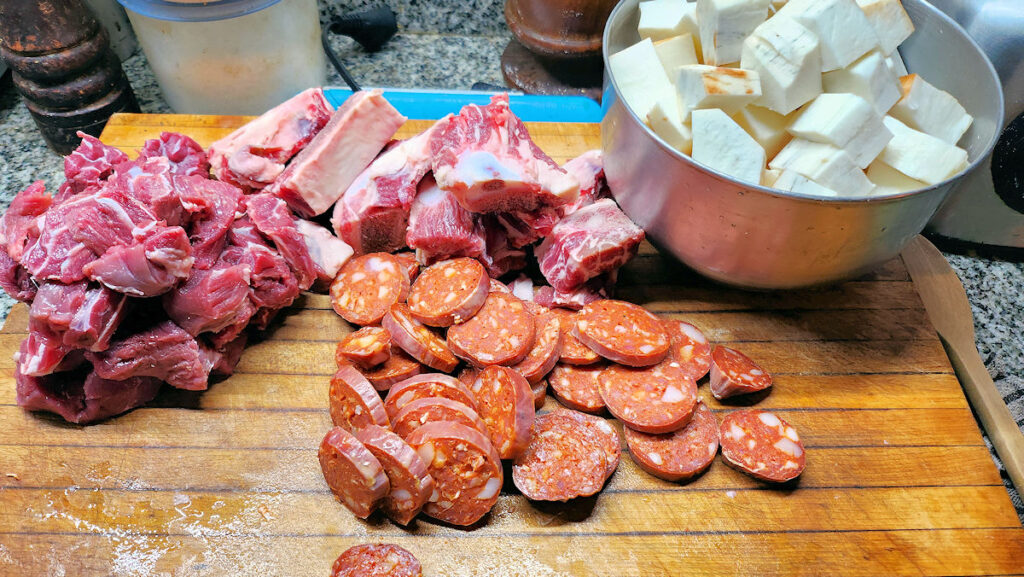
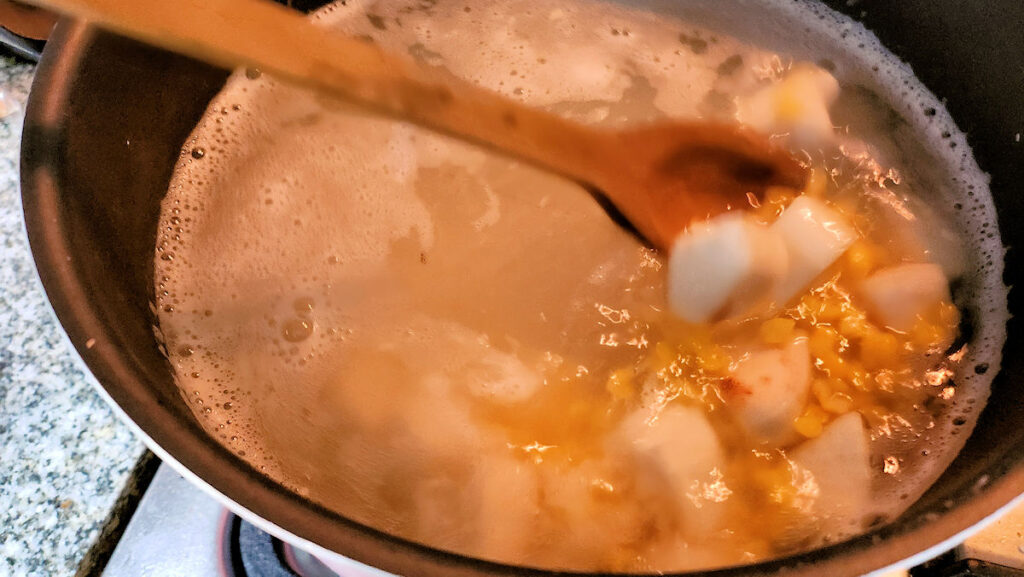
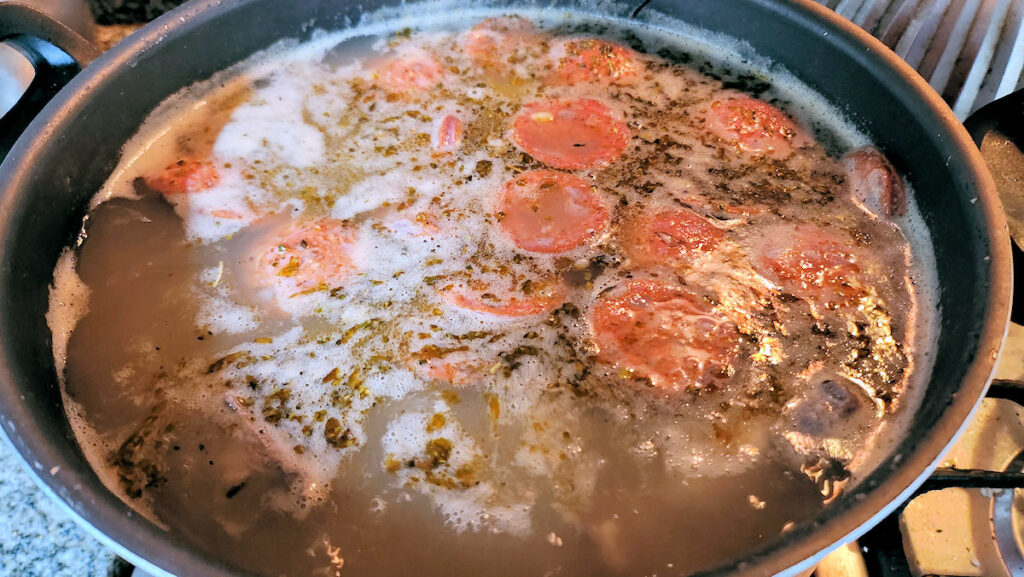
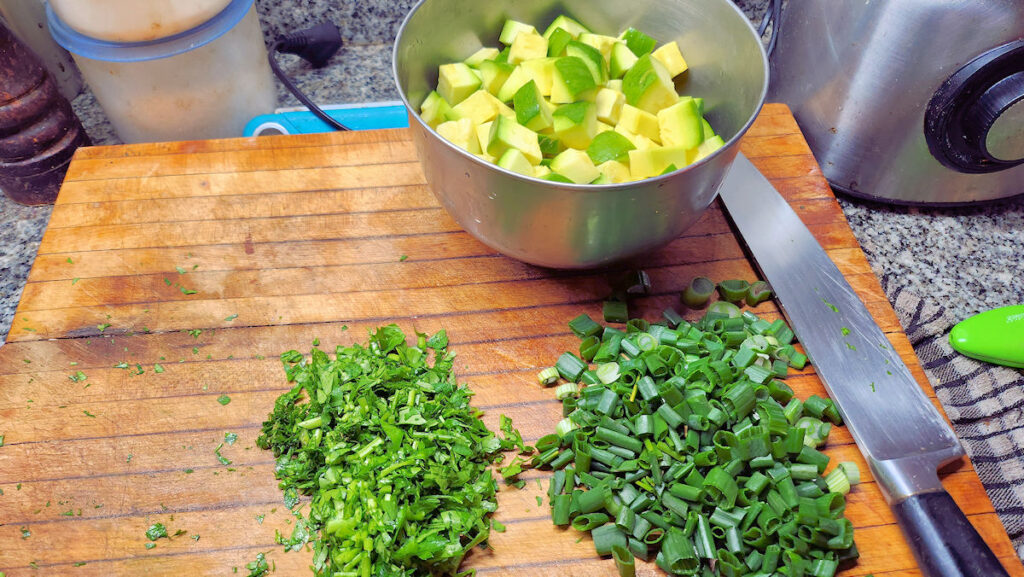
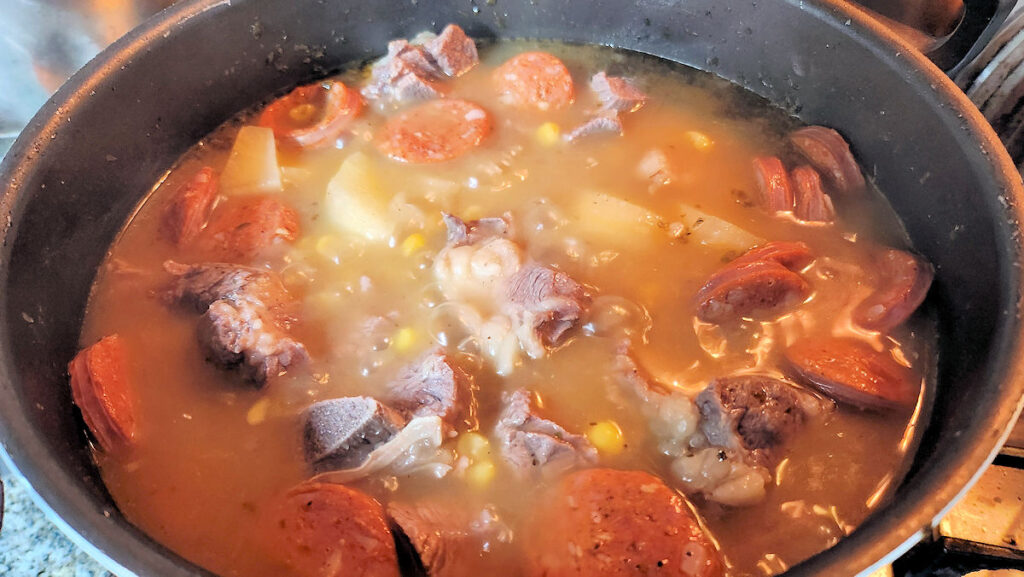
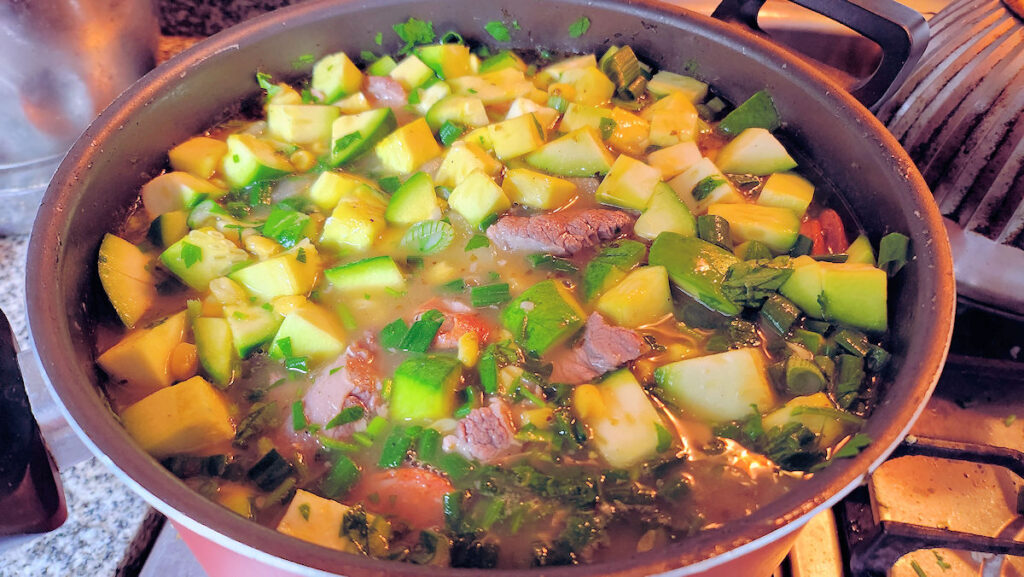
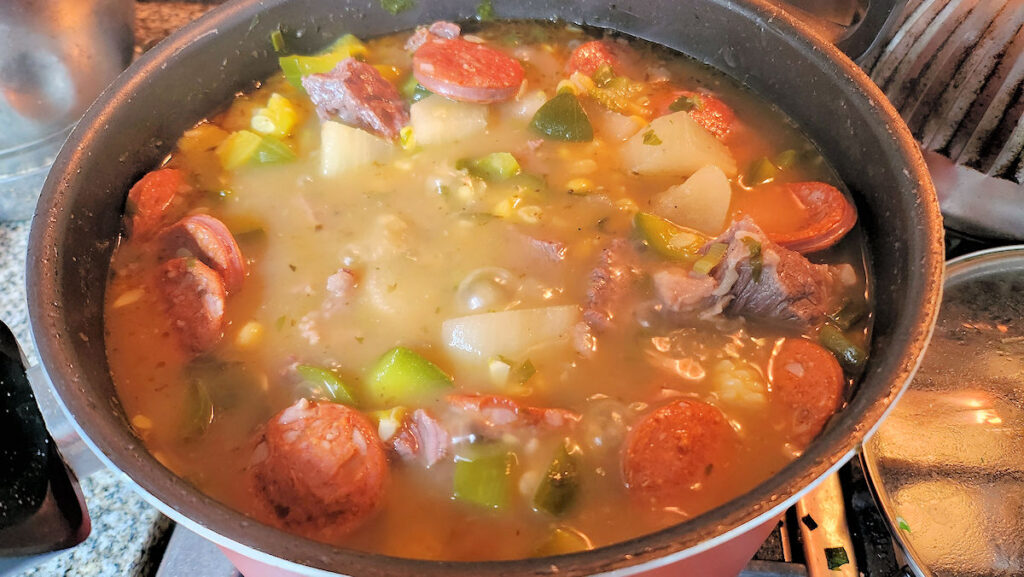
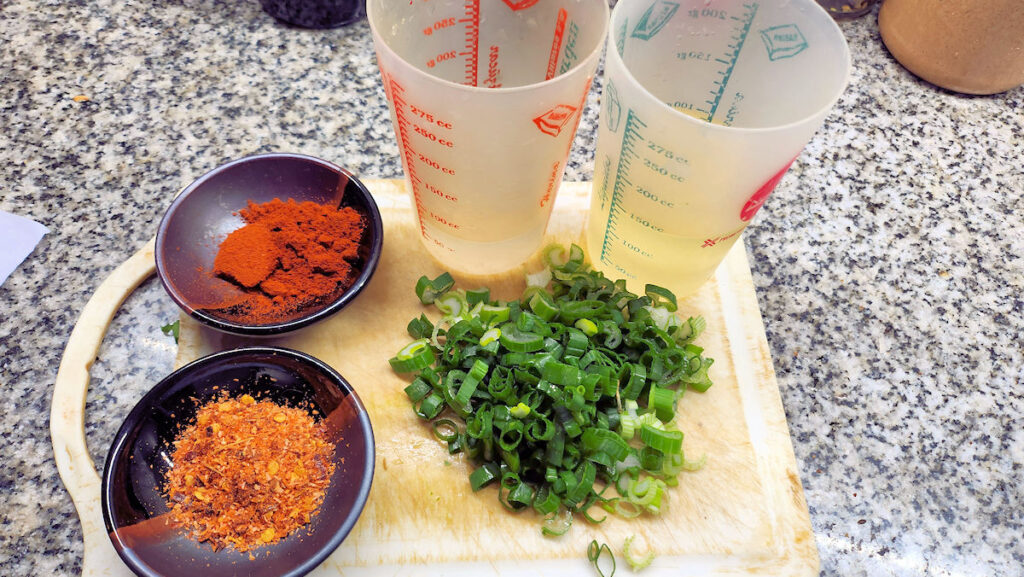
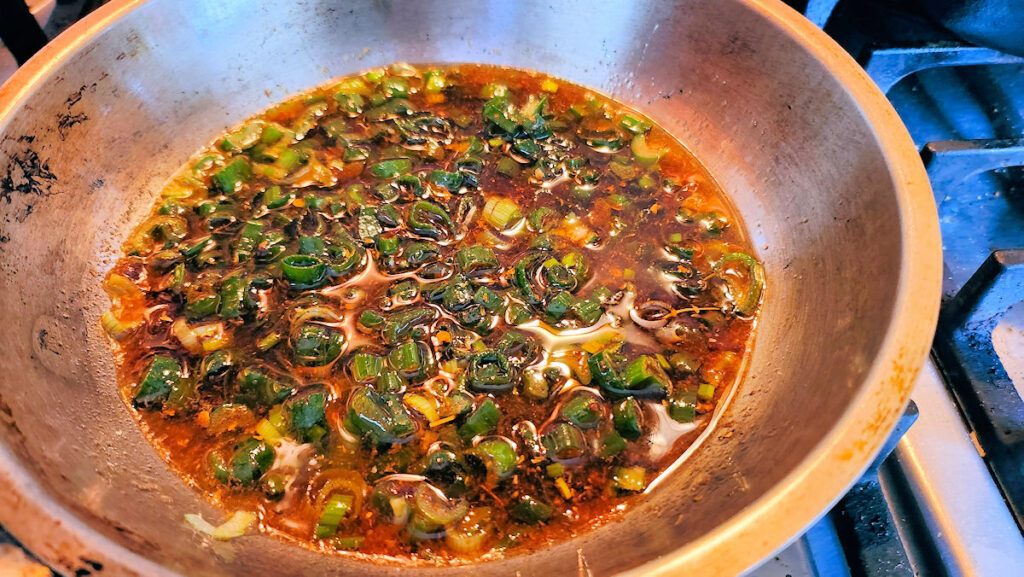
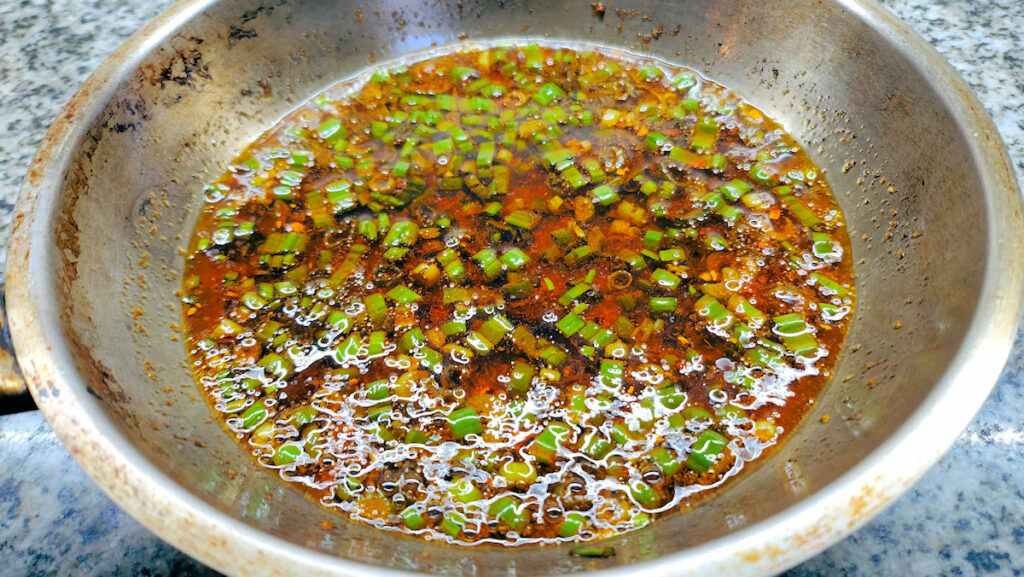
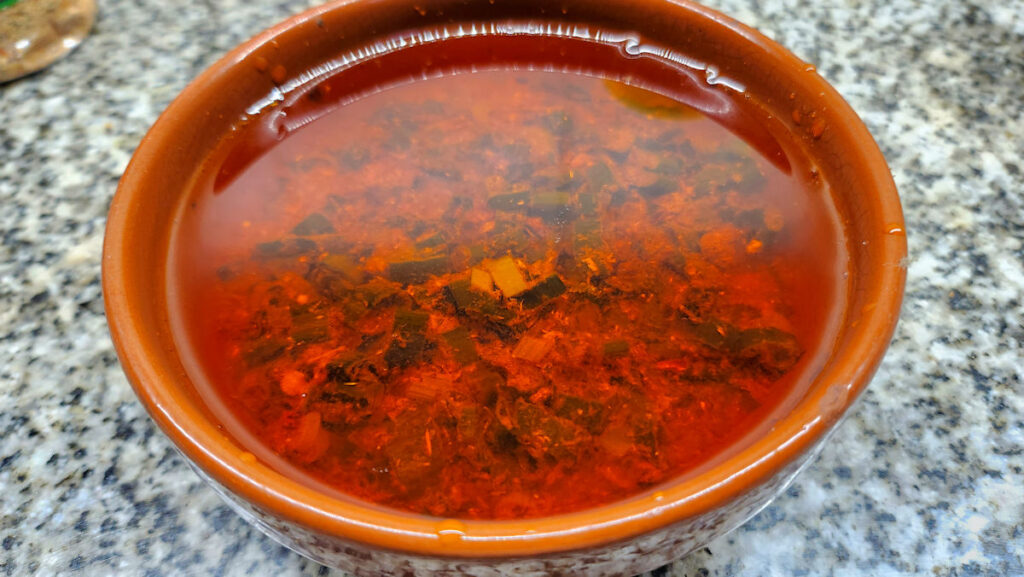
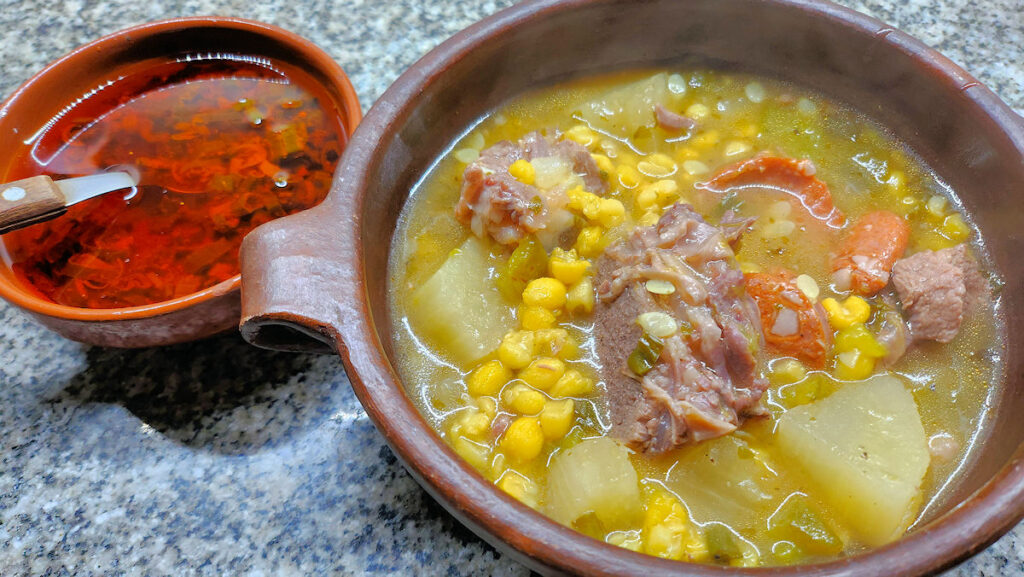
[…] This time focused just on restaurant dishes, as the two big things I cooked were a huge pot of locro de mandioca, covered in yesterday’s post; and a new entry in The Bread & Soup Project, coming up in a post […]